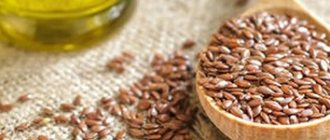Release form and composition
Dosage form - homeopathic oil for topical use: after shaking for half a minute, it looks like an oily, opaque liquid from yellow with a greenish tint to light yellow, with a weak, peculiar odor, which does not separate within 60 minutes (15 or 25 ml of oil each homeopathic in orange glass bottles, sealed with a polyethylene stopper and cap, 1 bottle in a cardboard pack; 25 ml of homeopathic oil in brown glass bottles, sealed with a screw cap, equipped with a pipette and a first opening ring, 1 bottle in a cardboard pack. Each pack also contains instructions for use of Tui-GF).
Composition of 100 g of oil:
- active substance: thuja occidentalis (thuja) in homeopathic dilution D1 – 5 g;
- auxiliary component: petroleum jelly – up to 100 g.
Pharmacological properties
Pharmacodynamics
Thuja-GF is a monocomponent homeopathic remedy, its therapeutic effect is due to the active substance included in the composition. The oil is an original preparation that was developed based on the rich experience of the oldest homeopathic institutions in Russia. Its main active ingredient is Thuja occidentalis oil, which is well known for its anti-inflammatory and immunomodulatory properties. The active substance is included in the drug in homeopathic dilution D1. This concentration was selected over many years, and in the end it was found that this particular dilution is optimal and provides a positive effect of the product on the nasal mucosa. Vaseline oil, which complements the formula of the drug, provides it with softening, antimicrobial and moisturizing effects.
Thanks to its well-selected composition, Thuja-GF has the following beneficial properties:
- eliminates dry mucous membranes;
- stops inflammatory processes;
- makes breathing easier.
Long-term practice of using the product has proven its high safety. Homeopathic medicinal products are trusted not only by patients, but also by clinical specialists. The latter note the beneficial effect of Thuja-GF oil both for rhinitis and other otolaryngological diseases (otitis, sinusitis, inflammation of the adenoids, etc.), provided that it is prescribed as part of combination therapy.
With an integrated approach, treatment is always more effective. Chronic rhinitis can be not only a consequence of viral infection. In addition, potential causes of its appearance can also be adenoid growths, polyposis of the nasal sinuses, sinusitis, physical defects of the nasal cavity, such as cysts of the paranasal sinuses, deviated septum, etc. That is why therapy for the underlying disease requires an integrated approach and includes homeopathic Thuja-GF oil.
One of the advantages of the drug is the possibility of its combined use with other drugs or therapeutic measures. This integrated approach helps to increase the effectiveness of treatment and allows you to forget about chronic runny nose for a long time.
Treatment of grade 1-2 adenoids in children
Let's talk more specifically about the first two stages of the disease and methods of treating them. The initial stage of the disease is not as acute and noticeable as subsequent stages. This is why it is so difficult to recognize the first degree, which makes it possible for the ailment to develop into more serious forms.
Symptoms of grade 1 adenoids
- frequent runny nose ;
- short-term increase in temperature;
- voice due to constant nasal congestion ;
- difficulty breathing at night or during periods of daytime sleep when the child assumes a horizontal body position;
- cough when lying down;
- headaches , lethargy and apathy due to lack of oxygen;
- hyperemia (redness) of the tonsils;
At this stage of the development of the disease, the most important thing is to diagnose it and select competent treatment, which may include both drug therapy and physical therapy.
Stages of treatment
- First of all, you need to think about how to make breathing easier, relieve swelling and restore the normal state of the nasal mucous tissues. with a low-salt or saline solution , as well as drops such as Aqualor , Physiomer , Aqua Maris effectively helps with this . Antiallergic drugs Zyrtec or Fenistil also eliminate swelling.
- In order for the nose to continue to breathe calmly, you should resort to the help of vasoconstrictors - Galazolin , Sanorin , Naphthyzin .
- Therapeutic proto-head drops (2% silver) , Eucasept, Tizin and Pinosol have a local anti-inflammatory effect.
- Inhalation with a nebulizer using saline or saline solution, decoctions of medicinal herbs.
- If there is no allergy , then you can use homeopathic remedies, for example, drops of thuja oil in the nose, Tonsilgon , Adenopai or Sinupret .
- If necessary, the doctor may prescribe antibiotics to eliminate infections in the mouth and respiratory tract, as well as drugs that stimulate the immune system.
- Simultaneously with drug treatment, the patient must undergo physiotherapeutic procedures - laser therapy, ultraviolet irradiation, tube, electrophoresis with calcium chloride , vacuum, ultraphonophoresis with the application of ampicillin ointment .
It is important to remember that all medications, including nasal drops for adenoids in children, antibiotics or immunomodulators, should be prescribed by the attending physician after examination and determination of the extent of the disease. Often, parents, not receiving immediate results, begin to “play” doctors themselves and prescribe medications for their child.
It happens that after the first relief occurs, mothers feel sorry for their children and themselves cancel all the testimony of the ENT doctor. Both situations can result in the development of serious complications and the transition of the disease to the next stage. By the way, treatment of grade 2 adenoids in a child often requires surgical intervention.
Is it necessary to remove adenoids at the first symptoms of enlargement? Otolaryngologists and pediatricians, including the famous Dr. Komarovsky, advise first to undergo the conservative course of treatment described above. The operation is indicated in rare cases when there is no relief after therapy, and the child often suffers from sinusitis and otitis media .
In addition, there are signs of constant oxygen starvation. Preventive measures that are aimed at maintaining the child’s immunity at a high level will help avoid the disease not with the help of medications, but through:
- good nutrition;
- healthy sleep and daily routine;
- frequent walks in the fresh air;
- physical activity, outdoor games or sports.
In addition, you should not neglect medical examinations and the help of specialists. Therefore, if you notice symptoms of enlarged adenoids in your baby, do not waste time and immediately seek medical help.
special instructions
During therapy with homeopathic medicines, existing manifestations of the disease may temporarily worsen. In such cases, it is recommended to discontinue the drug and consult a doctor for advice.
Impact on the ability to drive vehicles and complex mechanisms
The drug does not affect the performance of types of work that require concentration and quick reactions (such as driving a car, other vehicles, working with moving mechanisms, performing the functions of a dispatcher or operator, etc.), which may pose a potential danger to the patient and people included in the scope of his activities.
Treatment of grade 2-3 adenoids in children
If conservative drug therapy in combination with physiotherapy gives a positive result, then the first two degrees of adenoids can be cured without surgery. The advanced second or third stage of the disease is a completely different matter.
Symptoms of grade 2 and 3 adenoids
When the disease moves to the second and third stages, in addition to the above listed manifestations, the symptoms are replenished with the following signs:
- difficult and noisy breathing through the mouth or nose;
- constant headaches , memory impairment, lethargy, loss of attention due to constant oxygen starvation;
- heavy snoring during sleep;
- ear pain;
- hearing loss;
- frequent inflammatory diseases ( otitis media , sinusitis , tonsillitis , sinusitis , bronchitis );
- constant runny nose accompanied by serous discharge;
- fatigue, loss of appetite and performance, apathy;
- retardation in mental and physical development;
- nasality intensifies, slurring appears in the pronunciation of words;
- “adenoid face” is changes in the child’s appearance associated with a constantly open mouth, which is characterized by malocclusion , as well as lengthening and narrowing of the lower part of the jaw;
- lymph nodes may enlarge ;
- the enlargement of the adenoids is visually noticeable.
Stages of treatment
- Rinsing the nasal passages and removing purulent discharge from the surface of the tonsils. Such manipulation should only be performed by a specialist using specialized instruments (nasopharyngeal douche). It is forbidden to carry out this procedure on your own, because You can push pus even further into the nasopharynx, thereby worsening the condition of the adenoids.
- Anti-inflammatory treatment with drops such as Albucin or Protargol .
- Antibiotics ( Macitrol , Polydexa ), corticosteroids ( Nasonex, Flixonase, Avamis ) and immunomodulators ( Derinat ), as well as homeopathic ( Tonsipret , Sinupret ), antihistamines ( Erius , Zodak ) and hormonal drugs ( Avamis , Nasonex ).
- Physiotherapy ( laser therapy , magnetic therapy , inhalation , electrophoresis , quartzing of the nasal passages and nasopharynx, and so on).
In cases where conservative treatment methods do not produce results, and complications appear in the form of sinusitis , maxillofacial anomalies , apnea , sinusitis and otitis media, surgery comes into play. Recent studies have shown that tonsils play an important role in the functioning of the immune system. Therefore, modern doctors recommend trying a standard treatment procedure before surgery to remove adenoids.
There are two main types of adenotomy:
- classical, when, after local anesthesia, a surgical instrument is inserted through the oral cavity, and then the enlarged adenoid tissue is removed;
- endoscopic, when, under general anesthesia, a tube with a camera is placed into the nasal cavity (the image is displayed on the monitor) and, using a special instrument, the overgrown tissue is crushed and removed with suction.
An important preoperative stage is preparation. The patient must undergo appropriate studies (take a general and biochemical blood test, urine test, have a coagulogram , x-ray or tomogram of the nasal sinuses), and also obtain a doctor’s opinion that he does not have inflammatory diseases or other ailments in the acute phase.
Reviews about Tuya-GF
Patients mostly leave positive reviews about Tuya-GF. The advantages most often include the natural composition of the drug, its effectiveness in nasal congestion and good tolerability.
The most significant disadvantages are considered to be negative side reactions, most often in the form of a burning sensation when instilling the oil. Most users call the cost of a homeopathic remedy high. And in some cases, unfounded, since there is no therapeutic effect.
What is the effect of thuja on adenoids?
People began to use thuja as a medicine from the 15th-16th centuries. For the first time, the effectiveness of evergreen oil was recorded by Christian Hahnemann, who is considered the founder of homeopathy.
Doctors in Western Europe called thuja the tree of life, treated diseases of the respiratory system with pine esters, stopped bleeding, and killed parasites. A recipe was created for making oil from thuja cones by distilling them. The method of extracting useful components has not changed much to this day.
Modern chemical science can, from a practical point of view, explain the usefulness and effectiveness of thuja for the treatment of adenoids. The secret is in the composition of the product. It contains:
- Flavonoids. These natural components have a positive effect on the activity of enzymes and the functioning of the body as a whole.
- Aromatic resin. Makes breathing easier and gives the oil a pleasant fresh aroma.
- Aromadendrin. Contained in thuja leaves. Restores the nasal mucosa.
- Essential oil. Eliminates pathogenic flora in the nasopharynx, relieves swelling.
- Sesquiterpene alcohol.
Constricts blood vessels, normalizes breathing. Calms the nervous system, which has a positive effect on sleep. - Tannins. They have an astringent, anti-inflammatory effect.
- Ascorbic acid, tannin. Act as immunomodulators.
The chemical composition of the extract from thuja cones allows the product to have a positive effect on the body in the following areas:
- reduces the frequency of acute respiratory infections, acute respiratory viral infections;
- relieves nasal congestion, frees up the passages for breathing;
- relieves pain in inflamed nasal passages, nasopharynx, irritated throat;
- normalizes the size of adenoids;
- has a wound healing effect;
- calms the nervous system;
- increases the baby's immunity;
- constricts the vessels of the nasopharynx;
- normalizes the functioning of the body's metabolic systems.
The use of thuja makes it possible to get rid of the consequences of inflammation of the adenoids. Children sleep better, become cheerful and active. The brain does not experience oxygen starvation, so it works actively.
This is interesting! Thuja is a tree from the cypress family. Grows in North America and East Asia. But it is often used as an ornamental plant to decorate public parks, winter gardens, and greenhouses. Today, the main producers of thuja oil are companies from Canada and the USA.



